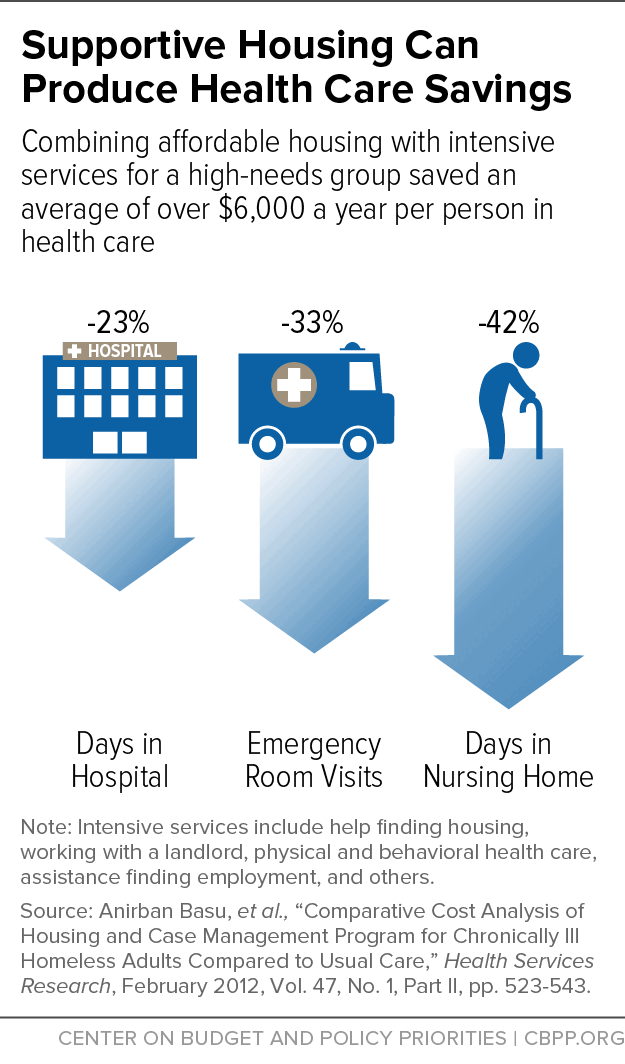BEYOND THE NUMBERS
Supportive housing — a highly effective strategy that combines affordable housing with intensive coordinated services — can help people struggling with chronic physical and mental health issues maintain stable housing and receive appropriate health care, as we detail in a new paper. But despite its effectiveness, few people who would benefit most from supportive housing actually receive it. Policymakers should expand the model to better meet need.
Supportive housing effectively helps people with disabilities — especially people experiencing homelessness for a long time — stay in stable housing, a broad body of research shows. It also helps people with disabilities get better health care, and it’s growing as a model to assist seniors trying to stay in the community as they age and families trying to keep their children out of foster care. And people in supportive housing use costly systems like emergency health services less frequently and are less likely to be incarcerated.
For example, one supportive housing study that recruited homeless, hospitalized people with chronic, serious illnesses — a particularly high-needs group — found that, by preventing subsequent hospitalizations and the use of other service, health care savings could be substantial. On average, people offered supportive housing spent 23 percent fewer days in hospitals, had 33 percent fewer emergency room visits, and spent 42 percent fewer days in nursing homes, per year during the study period. These reductions (and others) more than offset the cost of supportive housing, saving over $6,000 annually, per person (see graphic).
Policymakers, administrators, and health providers increasingly understand that a lack of stable housing can complicate health goals, and that linking health care with affordable housing can produce better outcomes for some people than providing them separately. Yet there’s not nearly enough supportive housing to meet the need. Policymakers can create additional supportive housing by:
- Providing additional rental assistance and other housing resources;
- Reinvesting savings generated by supportive housing to increase the supply of rental assistance;
- Making greater use of Medicaid services for supportive housing; and
- Targeting supportive housing only on those who need it.
Click here to read the full paper.

